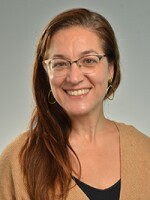On March 20, 1978, William Least Heat-Moon left Columbia, Missouri in a Ford van. The van, which he named Ghost Dancing, would be his home for the next three months.
He was 38 years old. His marriage was falling apart. He'd lost his teaching job due to staffing cutbacks. His decision to get behind the wheel in search of America's stories was part dream, part desperation.
Now that the van is a literary artifact, he has to visit it in a museum. And he's careful not to get behind the wheel. Sitting back in that driver's seat makes him misty eyed.
"What an exciting thing it was," he says, now a wizened 77-year-old man with a full head of gray hair.
He remembers waking up every morning for the entire three months thinking not only I can't believe I'm really doing this, but also I can't believe that it's working, that I can just walk into these places and people just start talking about their lives.
By 1982, the resulting book, Blue Highways, hit the top of the New York Times best-seller list and stayed there for 42 weeks. The trip itself was invigorating, and the book's enormous success reset his life completely.
His stroke of luck, as he now sees it, was starting in the South. He started there because of the weather, but the culture around storytelling in that part of the country helped him get off on the right foot. Moreso, he believes, than if he'd started in a colder climate. Say, in Minnesota.
"They're polite," he says of Northerners. "Politeness, for a stranger coming in to find a conversation, can be difficult ... In the South, anything can be upfront immediately. You can talk to somebody for 60 seconds and you may be hearing about a divorce."
Whereas Blue Highways took Least Heat-Moon all over the country, his next book, PrairyErth, was something he calls "vertical travel." Set entirely in Chase County, Kansas, the book chronicles the author's travels not only across a limited geographic area, but down through layers of history that have accumulated, like sediment, in that single spot. He talked to people about what had happened to them and their families in this one place, and came away with a 622-page ode to the human geography of the Flint Hills.
PrairyErth arguably changed the conversation about life on the prairie.
"This book has not been out of print in 25 years," he says. "Let's be honest: This is a book about Kansas. As a woman said to me not to long ago, I know three things about Kansas: It's flat, it's treeless and it takes two pages up in the Rand McNally Road Atlas. The last one is true, those other statements aren't true, but that's the perception so many Americans have."
When it comes to why we travel, he says it's part of being American.
"We're all descendants of people who came from the other side of the earth, from the Eastern Hemisphere, all of us. We're descendants of people who said, 'I don't like my life here, I'm going to cross the Pacific or the Atlantic and start again.' It's natural for us, when our lives don't go quite the way we want, to put our kit bag over my shoulder and hit the road in one way or another."
So perhaps it's worth noting that Least Heat-Moon's own journey began in South Kansas City, at 74th and Flora just east of Troost, to be exact. He spent the 1940s and '50s riding the streetcars all over town, his first indulgence in a love of motion. A neighbor who loved to eat took his father all over town to eateries where he could sample the authentic cuisines of many different cultures, and his father, in turn, took him on the same excursions.
He says that's what gave him the impulse to look in diners and roadside cafes on his search for America while he was writing Blue Highways. It reminded him to "get out of the van, go in and see what happens."
He wonders if a young writer today would have the same experience, in part because of technology.
"If I had had a cell phone on the Blue Highways trip while I was traveling around, walking through some of these villages with a phone in front of my face, I would have come home after three months, I would have had no stories to tell."
Now, Least Heat-Moon is on a new adventure with Celestial Mechanics. It's fiction, and inspired not by the land, but by the sky. The main character is a young man, an amateur astronomer trying to understand his place in the cosmos.
"I think part of what's going on in this country today and around the world is that so many people young and old have never felt a connection with something that's really greater than they are. We skin around star matter. We are star dust," he says. "Everybody should be able to point out, in the sky, two planets, by name, say a few things about them, and also six stars."
Perhaps that's because the author only has one regret: that he didn't spend more time looking up.
Portrait Sessions are intimate conversations with some of the most interesting people in Kansas City. Each conversational portrait is paired with photographic portraits by Paul Andrews.
Gina Kaufmann is the host of Central Standard. You can reach her on Twitter.


